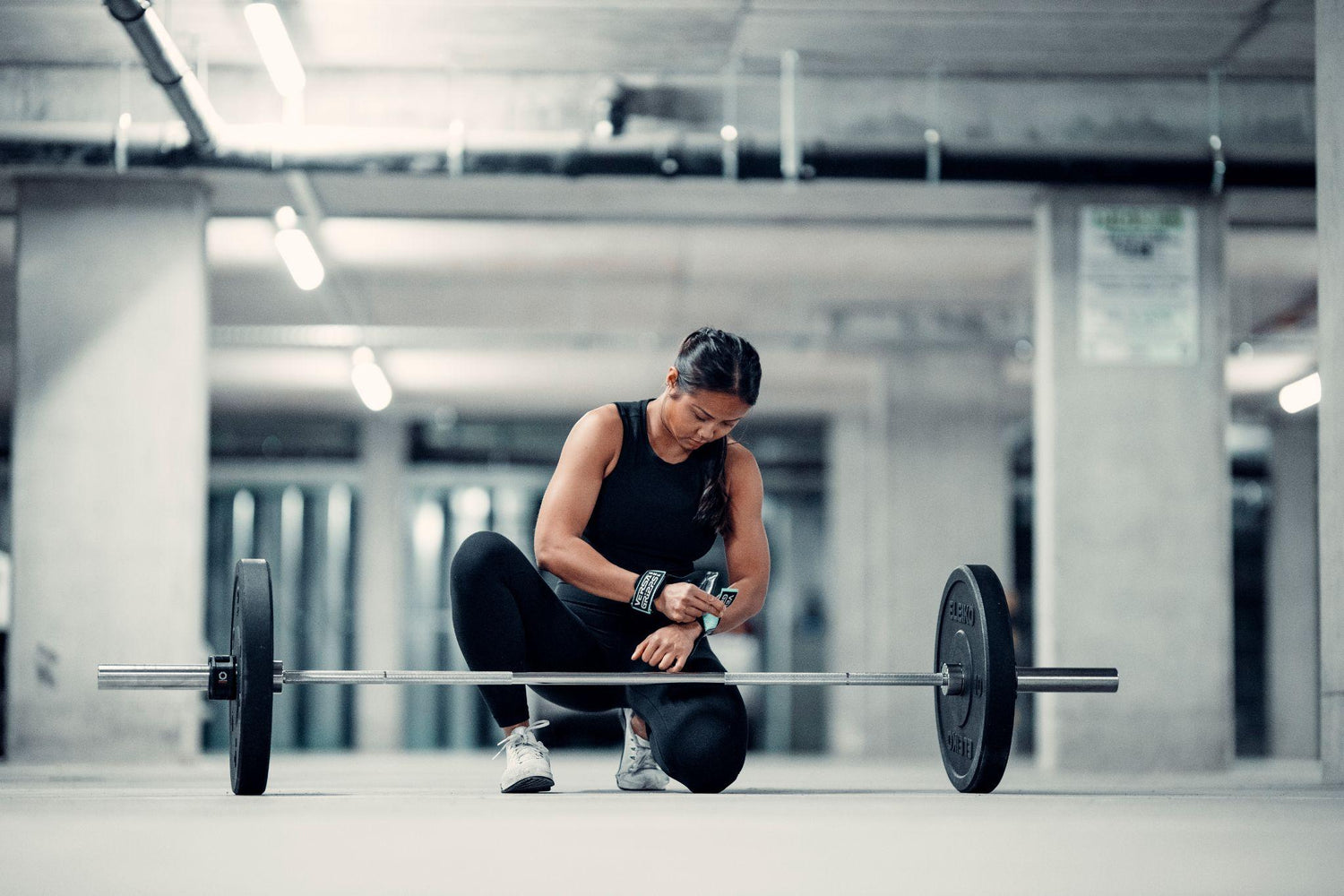
Grip Fatigue: Why It Happens and How to Fix It

If you’ve ever dropped a barbell or had to cut a set short because your grip gave out on you, you’re not alone. Many people struggle with their grip, especially those new to strength training.
Having a strong grip is essential for weightlifters, not only for safety reasons, but also for gains. Most of us don’t give much thought to hand grip strength until after a close call or injury. And injuries are what you want to avoid at all costs.
Ahead we’ll look at why grip fatigue happens and what you can do about it.
What causes grip fatigue?
Grip weakness during weight training can stem from a variety of factors, from improper technique to muscular imbalances to certain medical conditions (such as carpal tunnel syndrome). It’s important to figure out the underlying cause of grip failure. If you suspect it might be related to a medical condition, see your doctor.
To address grip fatigue, try incorporating grip training exercises into your routine to build up your grip strength. Don’t over rely on straps to lift heavy loads, and make sure you’re using proper grip technique. If you have muscular imbalances in the forearm or hand muscles, take targeted steps to balance things out.
How to measure your grip strength
Measuring your grip strength at home is easy. You can do it with one of the following tools:
- Handgrip dynamometer: These simple handheld devices test your grip strength, and many also offer hand exercise options to improve your grip strength. You can find lots of different dynamometers for less than $50 online.
- Weight scale: You can also use an old-fashioned weight scale to measure your grip strength. Holding the scale in both hands, push down with the heel of your hand on the top of the scale and your fingers wrapped around to the bottom. Watch this video for a demonstration.
Measure both hands so you can see the difference between your dominant and non-dominant hand. To interpret your results, refer to this chart.
Here’s another quick grip strength test to try: Grip a pull bar with palms facing away from your body. Let your body hang, with legs straight and feet off the floor. If you can hold onto the bar for 30 seconds without letting go, your grip strength is good. If you slide off before the 30 seconds is up, it’s time to work on your grip.
Exercises to increase grip strength

Before you launch into grip training, you need to know about the three different grip types:
- Crush: This refers to how strong your grip is using your fingers and the palm of your hand.
- Support: This refers to how long you can hold onto something or hang from something.
- Pinch: This refers to how long you can pinch something between your fingers and thumb.
If your grip is weak, try to incorporate different grip strengthening exercises that address all three grip types. Here are some examples:
Crush
Try the Farmer’s Carry, a simple move where you hold a dumbbell in each hand at your side (with palms facing toward your body) and walk for as long as you can (aim for 300 feet, the length of a football field or average city block).
Support
Try the Dead Hang, where you hang from a pull-up bar with arms shoulder width apart and your body limp. Try three sets of 10-second hangs with 30 seconds of rest. If this is too easy, add 10 seconds to each hang.
Pinch
Try the Plate Pinch Transfer, where you pinch a weight plate between your thumb and fingers and transfer it back and forth between hands (watch this video for a demonstration). Start with 5 pounds and work your way up.
Thick bar training
Another way to improve your grip is to use a thick bar, also known as an axle bar or fat bar. You often see them in strongman competitions. Training with a thick bar forces your grip muscles to work harder, making them stronger over time.
You can use a thick bar for a variety of moves, from deadlifts to presses. If your gym doesn’t have one, you can buy clip-on attachments to increase the diameter of any bar.
Get Better Grip Support with Versa Gripps

We all need a helping hand sometimes. As you progress through your weight training and gradually increase your loads, grip strength can become even more of a challenge. This is where accessories like straps and hooks come in.
Versa Gripps are a better alternative to traditional weightlifting accessories. A versatile, all-in-one solution, they’re like hooks, straps, and gloves, all in a single product.
Engineered with proprietary non-slip material, Versa Gripps are designed to reduce grip fatigue, so you can focus on your form. And they’re made for all pushing and pulling moves, so there’s no need to change gear between exercises.
Pick up a pair of Versa Gripps and start training better.